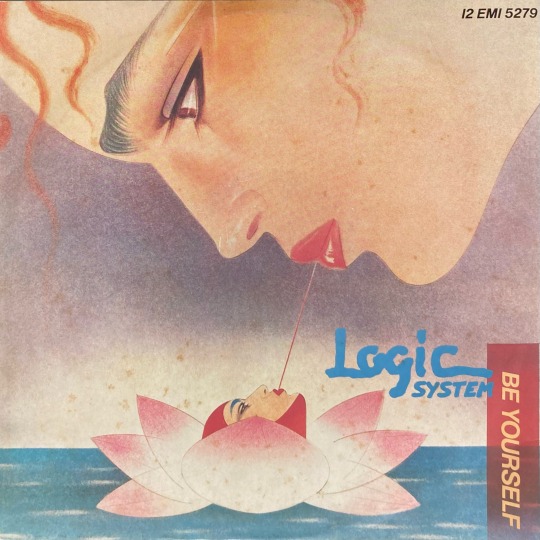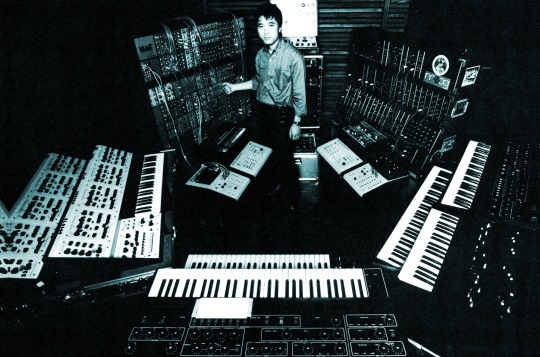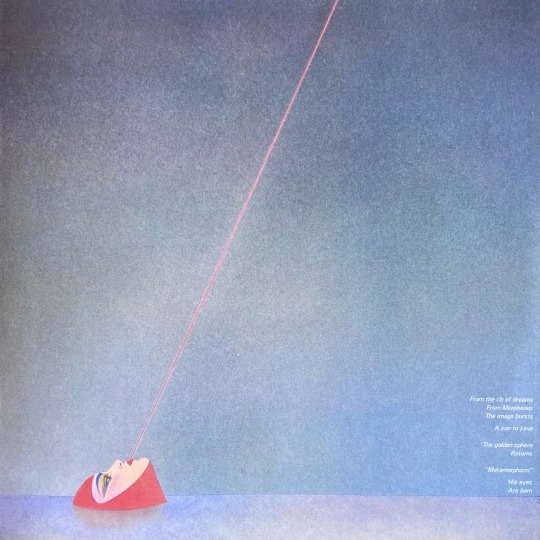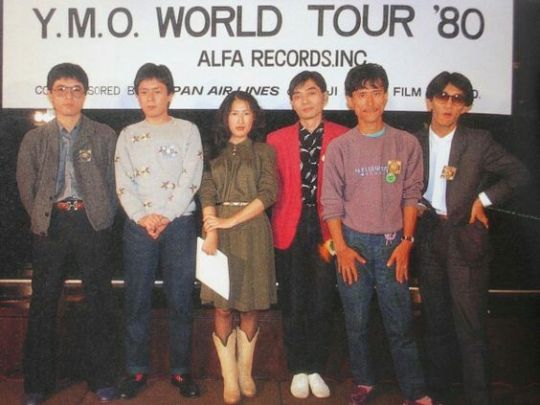#hideki matsutake
Explore tagged Tumblr posts
Text

Be Yourself (1982)
#vinyl#music#hideki matsutake#album art#1982#hologram parade#records#albums#80s#logic system#japanese music#physical media#be yourself#pater sato#art
718 notes
·
View notes
Text

My YMO-related vinyl gets from my trip to Japan. Original pressings of BGM and What, Me Worry? and the Great Tracks editions of Tomorrow's Just Another Day and Solid State Survivor (yellow clear vinyl edition). ♨️
#yellow magic orchestra#ymo#vinyl#vinyl records#yukihiro takahashi#haruomi hosono#ryuichi sakamoto#hideki matsutake
15 notes
·
View notes
Photo

Chimera / Bill Nelson (2005 Remaster)
Acceleration
2 notes
·
View notes
Text
youtube
The ways some musicians end up being respected differs from one to another as there are many reasons such a thing can occur then, because there is no set rule in here. For instance, Sakamoto is respected thanks to him being himself most of the time. Of course, the 80's were really special to him, since he managed to work well within his band and on his own. The latter works showed he kept in touch with the modern developments in the electronic music, yet he rarely replicated them. You see, while he always searched for what was contemporary, he rarely tried to make that completely copied, he put his own touches. B-2 Unit – to give you an example – outdid whatever the synthpop at the time did with some Sakamotian touches.
#Youtube#ryuichi sakamoto#b-2 unit#iconic storage#andy partridge#kenji omura#tadashi kumihara#hideki matsutake#80's music#synthpop
0 notes
Audio
Lyrics here
https://80sidolfan.wordpress.com/2023/02/17/logic-system-talk-back-1981-lyrics/
Logic System – Talk Back
32 notes
·
View notes
Text
Clocker - Alvin Lucier Nemureru Yoru (Karaoke version) - Hideki Matsutake How it was - Andy Stott Beauty - Einstürzende Naubauten Untitled n°5 - Rod Modell & Kevin Hanton #4 - Koko Ojazo - Aaron Dillaway & Lucrecia Dalt Honj - Ryuichi Sakamoto Banteay Srey - Carl Stone Pulse - Takeshi Kobayashi Altar piece - Joan Jeanrenaud Part 1 - Hartmann
3 notes
·
View notes
Text
舞踏会 [ Koshi Yamada ]
Koshi Yamada 1st.Album “Buto-kai” released on 1994/05/21 Koshi Yamada ( Vocal / All Lyrics & Music ) Shigeru Suzuki ( guitar ) Toshiaki Usui ( guitar ) Hirokazu Ogura ( guitar ) Motohiro Tomita (Key) Hideki Matsutake ( synth ) Motoya Hamaguchi ( per ) Yutaka Odawara ( drums ) Rey Ohara ( bass ) Katsutoshi Morizono ( guitar ) Kenji Kitajima ( guitar ) Takashi Numazawa ( drums) Takayuki Hijikata…

View On WordPress
0 notes
Text

Hideki Matsutake
30 notes
·
View notes
Video
youtube
LOGIC SYSTEM - “UNIT”
Logic System was a side project of Hideki Matsutake, best known for his work alongside Yellow Magic Orchestra. Admittedly, it feels like just about any music there is can be traced back to YMO, somehow. In recent years, lots of amazing Japanese synth-pop has been re-discovered and greatly appreciated by Western audiences, and the work of Logic System is no exception. “Unit” was love at first listen for me: grindy, enigmatic, and finishing with a propulsive synth riff unlike any other.
8 notes
·
View notes
Video
youtube
YMO - Rydeen (Live at Budokan, 1980)
#動画#音楽#YMO#yellow magic orchestra#Yukihiro Takahashi#Haruomi Hosono#Ryuichi Sakamoto#Akiko Yano#Hideki Matsutake#Kenji Omura
32 notes
·
View notes
Photo

Venus (1981)
Art by Pater Sato
#logic system#vinyl#album art#pater sato#80s#venus#1981#albums#hideki matsutake#1980s#hologram parade#physical media
510 notes
·
View notes
Text

#the dream team#yellow magic orchestra#ymo#akiko yano#haruomi hosono#yukihiro takahashi#ryuichi sakamoto#kenji ohmura#hideki matsutake#1980
30 notes
·
View notes
Text

Belle Excentrique / Kazuhiko Katoh (2004 Remaster Paper Sleeve)
Gigi, La Danseuse
#kazuhiko katoh#belle excentrique#haruomi hosono#yukihiro takahashi#ryuichi sakamoto#akiko yano#kenji ohmura#hideki matsutake#nobuyuki shimizu
0 notes
Text
youtube
Ryuichi Sakamoto actually reminded me of the fact many debuts from those with long careers basically belonged to the special category of the pioneering works within their genres. Thus, Yellow Magic Orchestra also did a great introduction and, yes, I should be more objective here, but even then – what they did was astounding. I mean, what was their benchmark at the time? Kraftwerk, I agree, but we already heard Sakamoto moving beyond what they did and going towards the direction the German group never suggested. Moreover, Sakamoto, Hosono and Takahashi made electronica more fun. This might be their greatest legacy – moving the electronic music away from the stuffiness. Sure, Kraftwerk also did that, though their sense of humour remained less pronounced.
#Youtube#yellow magic orchestra#yellow magic orchestra album#la femme chinoise#ryuichi sakamoto#haruomi hosono#yukihiro takahashi#hideki matsutake#masayoshi takanaka#tomoko nunoi#chris mosdell#kunihiko murai#70's music#synthpop
1 note
·
View note
Audio
山口美央子 「A DREAM OF Eμ」
61 notes
·
View notes
Audio
29 notes
·
View notes